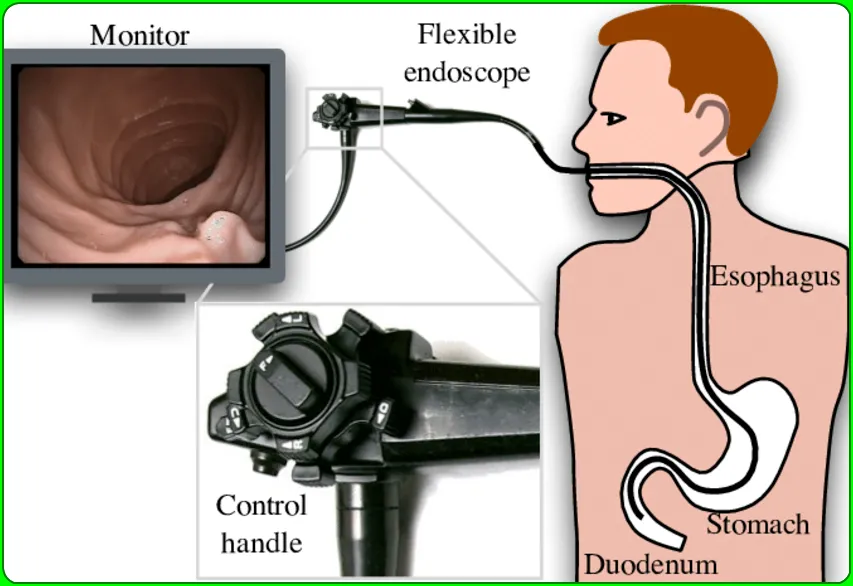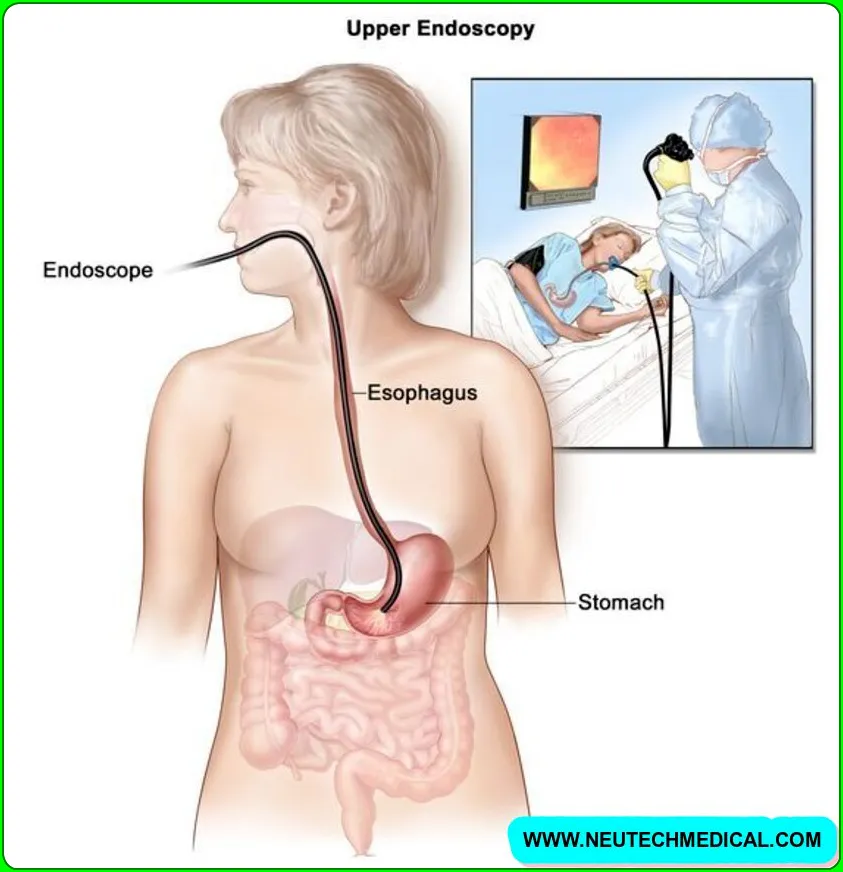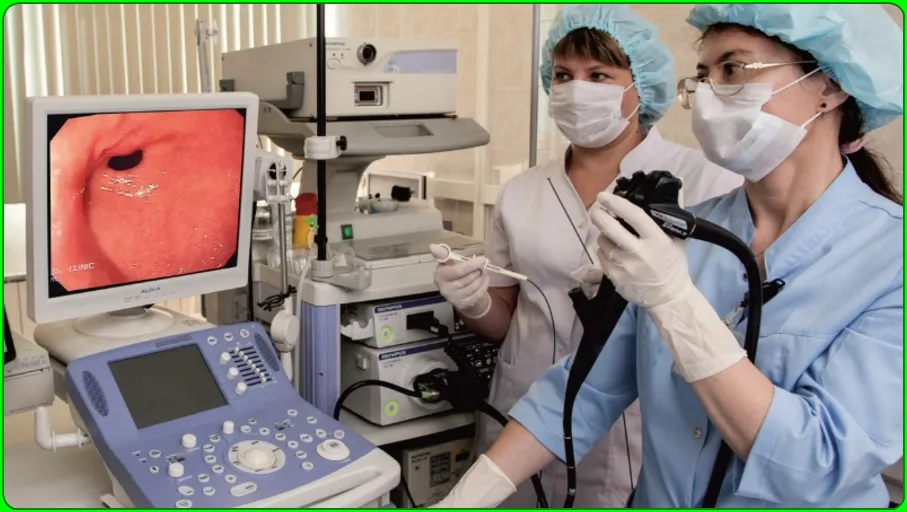What is Gastroscopy ?
This exam is performed by a trained doctor. It is called Oesophagogastro-duodenoscopy (OGD), sometimes also commonly referred to as gastroscopy or endoscopy. This is an examination of your stomach, the tube that carries food from your mouth to your stomach, and the first part of your small intestine. It consists of a flexible tube whose diameter is less than that of a finger. At the end of the gastroscope there is a light and a camera. Your esophagus, stomach and duodenum are shown on a screen through which pictures are taken. During the exam, the endoscopist may need to take some small tissue samples, called biopsies, for analysis under a microscope.
You may be given either a sedative to test or a local anesthetic can be sprayed to numb your throat to help you relax during the sore.

Article About:- Health & fitness
Article About:- Medical Technology
Article About – Sports
The procedure involves an endoscope with a ‘video camera’ ahead of which a long, thin flexible tube – the first part of the small intestine – is passed from the mouth to the esophagus. This allows the doctor to inspect these areas as well as perform special procedures such as a biopsy.
Why is Gastroscopy done?
Gastroscopy is usually performed to evaluate the following symptoms which mainly include indigestion, upper abdominal pain, nausea, vomiting or difficulty in swallowing. It is also the best test to find the cause of bleeding from the upper gastrointestinal tract. Gastroscopy is more accurate than X-rays for detecting inflammation, ulcers, or tumors in the upper gastrointestinal tract. Biopsies may be taken to determine sites of infection, test the functioning of the small intestine, and diagnose abnormal tissue, which can include conditions such as celiac disease and cancerous lesions.
Gastroscopy is also used to treat conditions of the upper gastrointestinal tract. Your doctor can pass small instruments through the endoscope to directly treat many abnormalities with little or no discomfort. For example, your doctor may dilate a narrowed area, remove polyps, or treat bleeding.
Your specialist may use a biopsy or upper endoscopy to obtain small tissue samples. Biopsies are done for a variety of reasons but are most commonly done to diagnose celiac disease or to test for Helicobacter pylori, a bacterium that is a common cause of duodenal and gastric ulcers. Sometimes a biopsy is done to differentiate between benign and malignant cancerous tissue. Gastroscopy may also be used to treat conditions of the upper gastrointestinal tract. Your doctor can pass instruments through the endoscope to directly treat many abnormalities with little or no discomfort. For example, your doctor may dilate a narrowed area, remove polyps, or stop bleeding.
How is Gastroscopy done?
A mild anesthetic is given before this test. You are not given a full general anaesthetic, in this you will be slightly aware of what is going on in the room. To do this, the back of your throat may be sprayed with local anesthetic to numb it and a small mouthguard may be placed between your teeth to prevent you from biting the endoscope. This procedure The medical staff monitor your vital signs during the procedure and will try to make you as comfortable as possible.

This process takes about 15 to 30 minutes. Once calm and lying down in a comfortable position on your left side, the endoscope is passed through the mouth and then in turn through the esophagus, stomach and duodenum. Having less diameter than the tube doesn’t enter your windpipe, so it won’t interfere with breathing. The camera at the end of a small scope transmits a video image onto a monitor allowing the doctor to examine it carefully.
How to prepare for Gastroscopy procedure?
Before the test you may be advised to have an empty stomach for about six-eight hours before the test. Gastroscopy can be performed with small sips of water only after consulting your specialist. It is very important that you tell your doctor about any medicine you are taking up to 6 days in advance. You may need to adjust your normal dosage for the exam or of course stop after consulting a doctor. Do it Discuss allergies to medications as well as any medical conditions, such as heart or lung disease. Also, alert your doctor if you need antibiotics before undergoing dental procedures, as you may need antibiotics before a gastroscopy as well.
What can I expect after the Procedure?
If you are having a gastroscopy, you will usually need mild sedation. It usually takes 20 to 30 minutes. You may feel sleepy, and you may feel bloated from the air introduced during the exam. You probably won’t remember anything about the process.
You are usually allowed to eat and drink after the procedure, but you are not advised to drive for the next 24 hours, travel alone on public transport, operate machinery, and drink alcohol. You should have a friend or relative accompany you to take you home. You may need to visit your doctor to discuss the results of your test or any biopsy results.
Is Gastroscopy Safe?
Gastroscopy is generally a safe procedure and serious complications are rare.
Complications are extremely uncommon, but it is possible to have a hole in the stomach or intestine. This is more likely when gastroscopy involves a surgical procedure such as removal of polyps or a biopsy. Bleeding can occur if a blood vessel is accidentally damaged, or the lining of the digestive tract ruptures. Further surgery may be needed to repair such damage. In very rare cases, complications can occur from infection or sedation.
If you have any of these symptoms after a gastroscopy, contact your doctor immediately:
1.) fever
2.) increasing pain in your throat, chest or abdomen
3.) Difficulty in swallowing
Why is a Gastroscopy Done?
This includes detecting dysphagia as well as a disease with difficulty swallowing, as well as food particles trapped in the tubular ducts of the esophagus and intestine causing persistent acute abdominal pain.

Deficiency causes anemia Peptic ulcer, heartburn, acid reflux Prescribing gastroesophageal reflux disease Resolving gut related issues such as removing obstructions in the esophagus Stimulating both protrusions of tissue such as polyps that do not indicate cancer and small cancerous tumor masses Diagnosing cases of stomach cancer and cancer of the esophagus, facilitating the passage of food and nutrients into the stomach in patients with difficulty swallowing or eating normally.
Risks of gastroscopy
Gastroscopy is generally a safe procedure with no serious complications. Sometimes, the gastroscopy protocol may have some risks such as:
1.) Bleeding occurs due to accidental rupture of a blood vessel in the esophagus or stomach.
2.) Internal bleeding that may result in the expulsion of rough, tar-like black stools.
3.) Pain in neck, chest and abdomen.
4.) Discomfort and pain while swallowing food.
5.) Difficulty in breathing.
6.) Fever
7.) Nausea and Vomiting
Results of gastroscopy
Upper endoscopy results are provided to the patient based on the reason for conducting the diagnostic procedure. If the doctor was assessing the presence of ulcers or conditions of gastroesophageal reflux disease, the results would be made available on the same day of the test and the medical specialist can recommend the appropriate treatment for the patient.
Benefits of gastroscopy
1.) Gastroscopy helps diagnose many conditions including gastroesophageal reflux disease and duodenal ulcer.
2.) Gastroesophageal reflux disease is a chronic condition in which the esophagus becomes irritated and the irritating food moves back up the esophagus and into the stomach.
3.) Doctors use gastroscopy to diagnose and view the stomach from the front and side.
4.) It can be used to see if the stomach lining is damaged, ulcerated or inflamed.
5.) The procedure takes 15 minutes, and gastroscopy can be done at home after asking a few questions. The surgery can be done under general anaesthetic, although you may sometimes have to stay in the hospital for the night.
Gastroscopy is not used to view the stomach after the patient has had a meal.
Gastroscopy vs endoscopy
Gastroscopy is a procedure in which a very thin, flexible tube called an endoscope is used to look inside the esophagus, stomach, and the first part of the small intestine. It is also sometimes referred to as an upper gastrointestinal endoscopy. At one end of the endoscope there is a light and a camera.
Endoscopy is a procedure to examine changes in the large intestine and rectum. The doctor inserts a long, thin, flexible tube with a tiny video camera on the end into the gastrointestinal tract. It can capture images and videos that service providers can review to arrive at an accurate diagnosis.
What does gastroscopy cost
Public Patient – at no cost to you unless otherwise advised
Private patients – Some costs can be claimed through Medicare and your health insurance provider, although there is a difference.
FAQ
Is gastroscopy painful?
Through the mouthpiece, we gently insert the tube into your mouth, where it is then sent into your stomach. To acquire a sharper look, the endoscopist forces some air down the tube. This won’t hurt, but it can give you a minor feeling of bloating (when your stomach feels full).
What is the difference between a endoscopy and gastroscopy?
While an endoscopy is used to evaluate several body components, such as joints, intestines, lungs, and the pelvis area, a gastroscopy only sees the oesophagus and upper GI tract. In actuality, an endoscope of the stomach is one. The endoscope may be inserted through an incision during an endoscopy.
What problems can a gastroscopy detect?
Using a gastroscopy, you can identify ulcers, inflammation, and infections.
Helicobacter pylori (bacteria that can result in stomach cancer, gastritis, and ulcers when the stomach lining is irritated)
celiac disease (where a protein called gluten cannot be digested)
cancer.
Is gastroscopy a risk?
Oesophageal, gastric, or duodenal perforation (puncture) is uncommon and most frequently happens as a result of dilatation therapies. Rarely, individuals may experience a heart attack, cardiac arrest, breathing issues, or stroke right before, during, or right after a gastroscopy.





